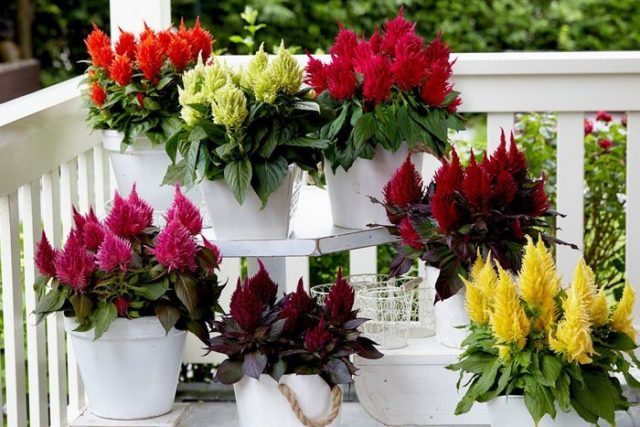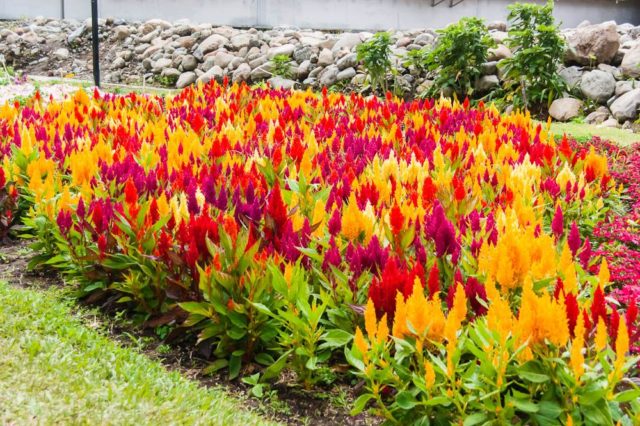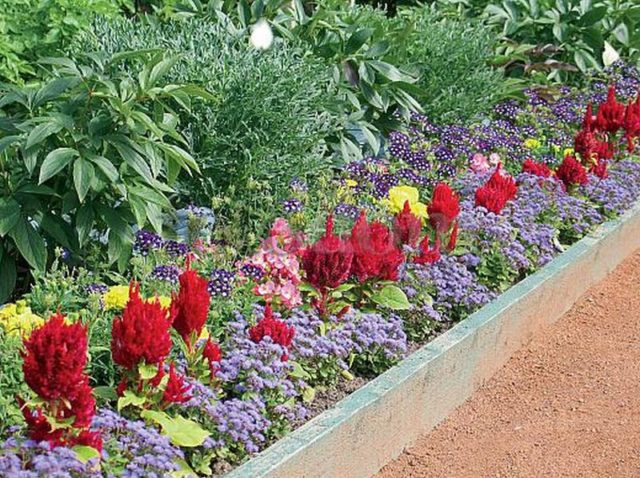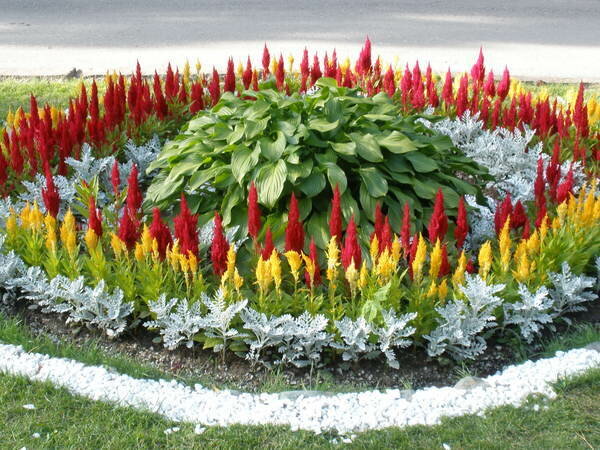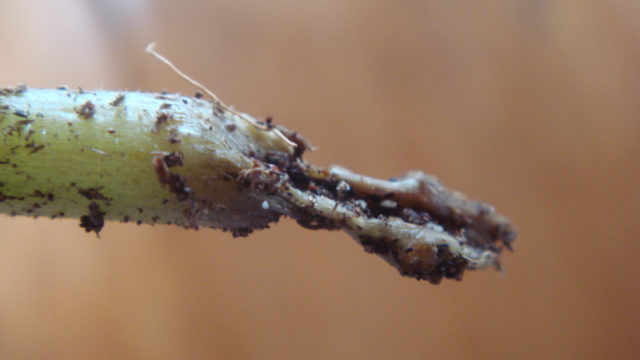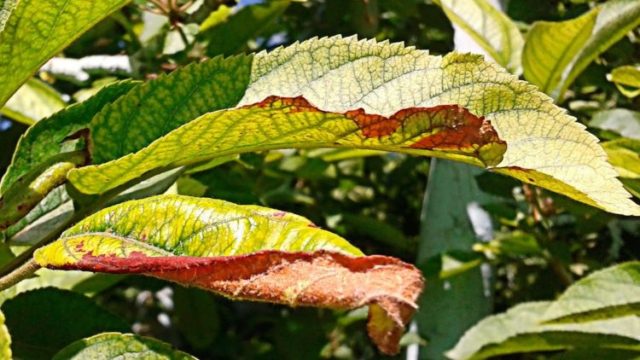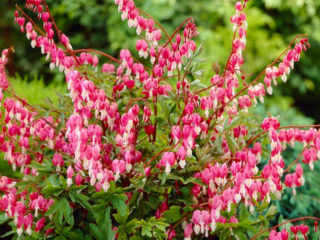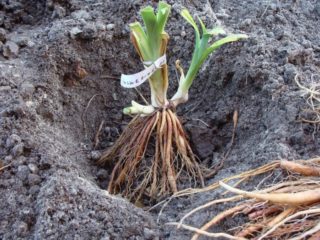Content
Cultivation of feathery cellosis from seeds allows you to get very bright and beautiful flowers in a flower bed. But first you need to familiarize yourself with the peculiarities of the culture, they breed it according to strict rules.
Description of paniculata with photo
The herbaceous plant celosia (Celosia) belongs to the Amaranth family and comes from the widespread silver celosia. It grows on average 1 m above ground level, has straight, branched stems, oval ovoid leaves of bright green color, smooth and pointed at the tips. In some varieties, red veins are clearly visible on the surface of the leaf plates.
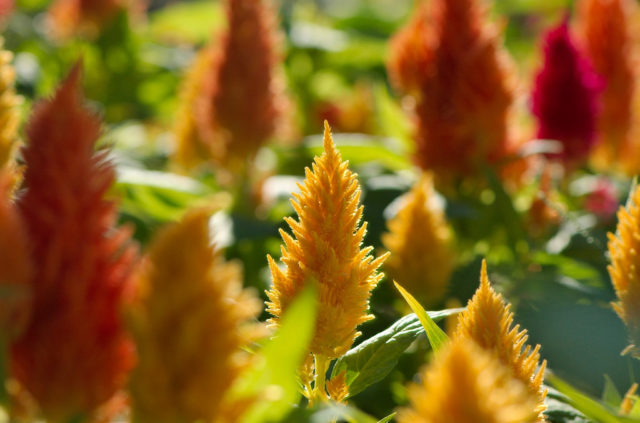
Feathery cellosia is a very beautiful plant, but does not winter in the ground.
Flowering begins in June and lasts until late autumn. Photos of pinnate celosia in a flower bed show that during the decorative period, the plant brings numerous paniculate inflorescences directed vertically upward. They consist of small elongated flowers, the petals of which are almost closed inward at the top. The buds are very densely arranged, they can be red, yellow, orange, crimson, purple.
In its natural form, the culture is widespread in warm climates - in South America, Africa, Asia, in some regions of North America.
Panicle cellosis: perennial or annual
Feathery celosia belongs to the category of annuals. In warm regions, it is often grown as a perennial crop, but in temperate and northern latitudes, the flower is simply not able to survive the frosty winter.
The best varieties
Feathery cellosia on the horticultural market is represented by undersized and tall varieties with bright flowering. At the summer cottage, any of the annuals will become a real gem.
Feuerfeder
Feuerfeder feathery cellosis is a short annual about 35 cm in height. In early summer, it brings bright red feathery inflorescences. The leaves are light green with pink-red veins, so the plant looks decorative even outside flowering.
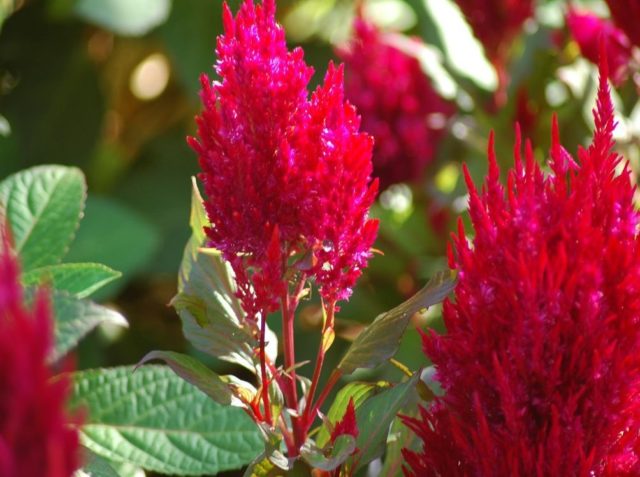
From German, the name Feuerfeder translates as "fiery feather", which is quite consistent with the appearance of the plant
Fakelshine
The Fackelschein cultivar is a tall, feathery cellosia about 70 cm in height. Differs in mesmerizing bright red flowering throughout the summer, brings abundant elongated and wide inflorescences.
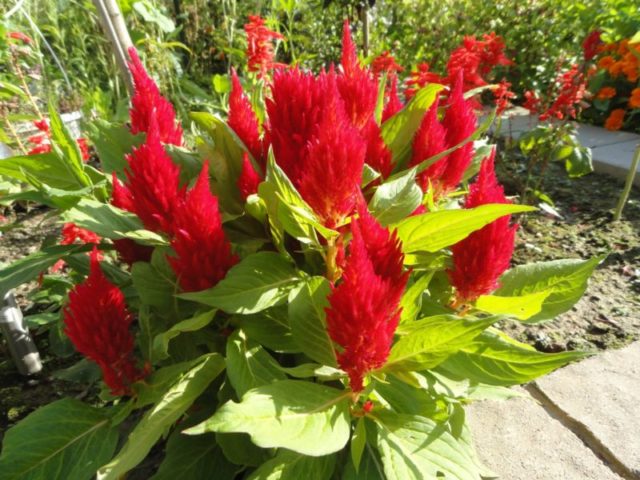
Torch really resembles a flaming torch in a garden
Golden Flitz
Golden Fleece is a popular tall annual crop. It rises up to 80 cm above the ground, the flowers of the feathery cellosia are golden-orange, collected in large inflorescences.

Golden Flitz can bloom until October and only fades with the arrival of frost
New bow
The low variety New Look stretches up to 40 cm above the ground. In July, it releases paniculate pinnate inflorescences of a bright scarlet color. The leaves of the annual also have a noticeable purple tint. Flowering continues until September.
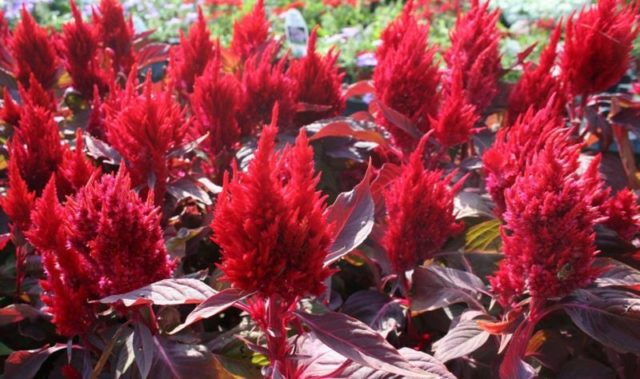
New Look feels comfortable in sunny areas of the garden
Thomsoni Magnifica
A very beautiful variety Tomsoni Magnifica is a high pinnate cellosia reaching 80 cm above the ground. By the beginning of July, inflorescences of a rich burgundy hue appear on straight stems. The beauty of the panicles is especially emphasized by the pinkish-green leaves of the annual.
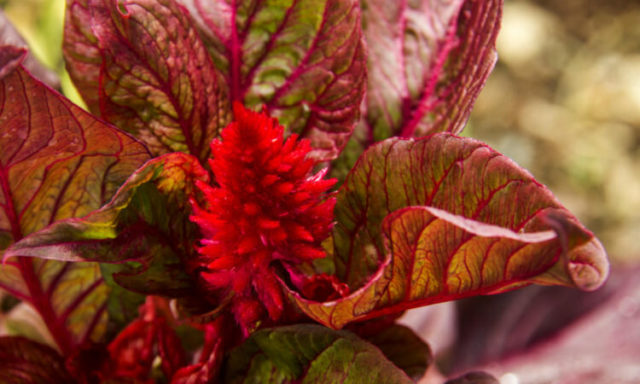
Thomsoni Magnifica blooms from early summer to October cold
Paniculata celosia in landscape design
Although pinnate cellosia is an annual plant, it is valued and used very widely in garden design:
- The plant is used to decorate verandas and terraces.
Low-growing varieties of pinnate cellosia grow well in closed containers in the open air
- With the help of an annual, single flower beds are created.
A flower garden with decorative ceilings becomes a bright spot in the garden
- The plant is planted in curbs and along the walls of buildings.
Celosia can beautifully emphasize the line of the path, frame a gazebo or a house
- The plant is used in large perennial beds.
You can plant celosia in a flower bed as a bright framing
Feathery cellosia is good both as a tapeworm and as an element of group compositions.
Breeding features
Unlike many other plants, annual feathery cellosia is propagated exclusively by seeds. The seed rises easily and quickly, in the summer the flower bed blooms with bright inflorescences, and dies off in the fall. Cutting is not accepted to practice, it takes too long, and besides, the culture often loses its decorative effect.
Growing seedlings of pinnate cellosis
An annual is not planted directly in the ground - first, they cultivate pinnate cellosis from seeds at home. Only slightly grown seedlings, already ready for development in the air, are transferred to an open area.
When to sow paniculate cellosis seeds
It is necessary to start growing seedlings in the spring, at the end of March or early April. In this case, by the summer, the annual will be ready to be transferred to the garden.
Preparation of containers and soil
Ideally, it is recommended to grow feathery cellosis immediately in individual containers; the culture does not tolerate a pick. You can use peat pots or plastic cups about 8 cm high. However, group sowing of seedlings in a low wide container is also allowed, in which case, when transplanting, you simply have to be especially careful.
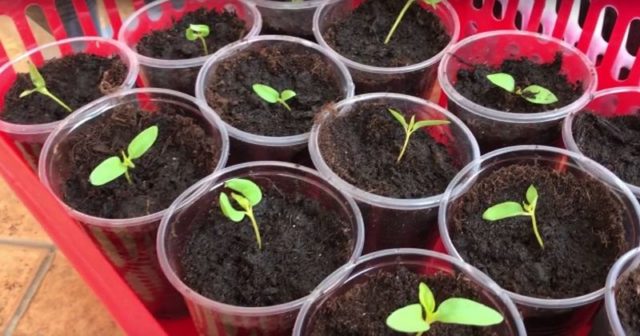
It is best to immediately sow the whole plant in separate pots.
Seedling soil must be fertile, loose and with a pH level of about 6.0. A neutral potting soil mixture is suitable for flower seedlings, you can also prepare the soil yourself, namely:
- mix 3 parts each leafy earth and sod;
- add 1 part of vermiculite, sand and humus.
It is recommended to bake the prepared mixture in the oven, and then spill it with biofungicide for disinfection. This is done in advance, 2 weeks before sowing the seeds.
Seeding Algorithm
Feathery cellosia is sown with a surface method - they do not sprinkle it with soil from above, but simply press firmly into the ground. The seeds are then lightly sprayed from a spray bottle and the pots or container are covered with wrap or glass.
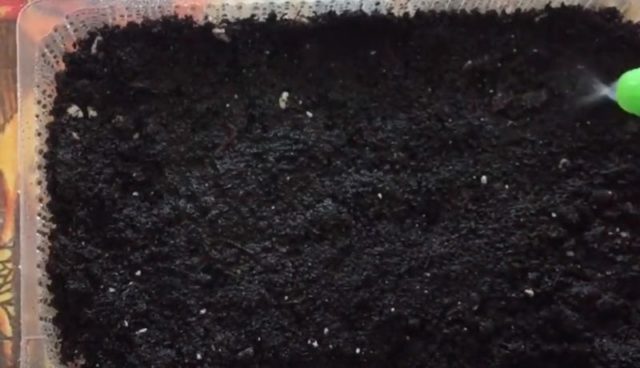
Celosia seedlings are sown on the soil surface
Seedlings are left in a bright, warm place at a temperature of about 25 ° C. From time to time, the shelter is removed, the soil is ventilated and moistened, the accumulated condensate is removed. The first shoots should appear in about a week.
Seedling care
Growing celosia seedlings in seedling boxes in spring is not particularly difficult. Leaving comes down to several measures:
- watering, the soil in the container is moistened as needed, it must not be allowed to dry out;
- backlight - seedlings are kept under a lamp so that the total daylight hours are at least 10-12 hours;
- picking, when 3 leaves appear in seedlings, they must be transplanted in separate containers, if initially the seeds were laid in a common container.
After picking, celosia can be watered with a solution of complex fertilizers for flowers containing potassium and phosphorus.
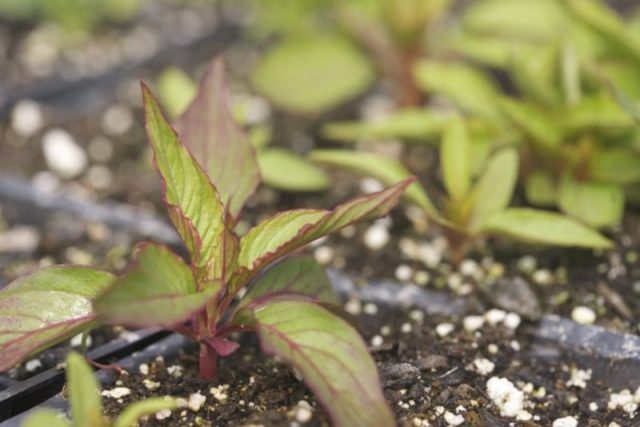
Fortified seedlings of celosia in May begin to harden in the air
In early or mid-May, the seedlings begin to gradually prepare for transplanting into the ground. To do this, pots with seedlings are taken out onto a balcony or veranda, first for a couple of hours, then for the whole day. Hardening is carried out for 2 weeks, so that the plant has time to get used to the new conditions.
Planting and caring for paniculata in the ground
Although annuals can be grown in closed containers, they are more commonly planted in flower beds in the garden. In order for the plant to take root successfully, you need to follow the important rules for planting and caring for the feathery cellulose.
Timing
In open ground, feathery cellosia is transferred at the end of May or early June. Since the annual perishes even from minor frosts, it is necessary to wait until a stable warm temperature is established day and night.
Site selection and soil preparation
It is necessary to plant feathery cellosia in a sunny, well-drained place, closed from drafts. The plant loves neutral or slightly acidic soil, but reacts poorly to excessive acidification, therefore, if necessary, the site is limed. For celosia, small holes are dug about 20 cm deep, after which they are half-filled with a mixture of humus, sand and turf.

The roots of the celosia are fragile, so they plant it on a flower bed together with a lump of earth
Landing rules
The landing algorithm looks very simple. On the day of transfer to the ground, the seedlings need to be watered properly, and then carefully removed from the containers, without destroying the earthy clod at the roots. The seedlings are placed in prepared holes, sprinkled with soil and watered again, after which the soil is lightly tamped.
Usually, feathery celosia is planted in heaps to create a spectacular flower bed. Since the annual will grow, you need to leave gaps between the seedlings, 15 cm for low-growing varieties and 30 for tall plants.
Watering and feeding schedule
The feathery cellosia reacts poorly to waterlogging. Usually it has enough natural precipitation - it is necessary to water the plant additionally only in extreme heat and drought. Use water at room temperature, cold moisture can damage the roots.
Top dressing can be carried out once a month - phosphorus and potassium are added to the soil, the transplanted annual does not need nitrogen. It is important not to overfeed the plant, otherwise the leaves will be very large, but flowering will never take place.
Loosening and weeding
So that moisture does not stagnate in the soil under the feathery cellulose, once every 2 weeks the soil must be fluffed to a shallow depth. Simultaneously with this procedure, weeds are removed. Self-seeding plants take water and nutrients from the ornamental annual, respectively, the splendor and beauty of flowering is noticeably reduced.

The soil under the cultivation must be loosened to avoid stagnant water and the appearance of weeds.
Wintering
With the onset of autumn, the flowering of celosia ceases, usually it completely loses its decorative effect by October. It is not accepted to preserve the plant in the soil, the annual crop is simply disposed of, and the next year, if desired, sow again with seeds.
Diseases and pests
Of the fungal diseases, annuals are most often affected by:
- blackleg;
Black leg disease develops against a background of waterlogging, the roots and stem darken and rot
- chlorosis.
If celosia grows in too acidic soil, the leaves may turn yellow from a lack of iron, and the flowering will be poor.
For the prevention of diseases, you need to monitor the level of soil moisture and control its chemical composition. If an annual is sick with root rot, you can transplant it to a new place and add wood ash to the soil. However, in case of severe damage, such a measure will not help, and the plant will die.
The most dangerous pest is aphids, which feed on the plant's cellular juices. The fight against the pest is usually carried out using a soap solution, the agent is sprayed over the flower bed every 3-4 days. In case of severe infection, you can use Aktellik or Karbofos.
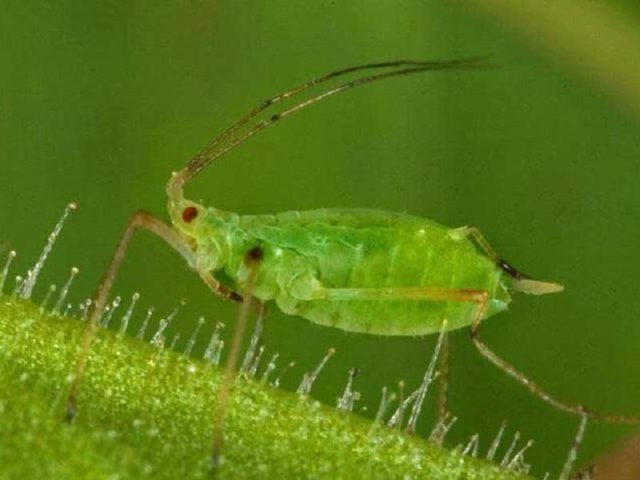
Aphids feeding on leaf juices are the most dangerous pest of decorative cellosis
Collection and storage of seeds
For planting pinnate cellosia in the next season, it is customary to store annual seeds in the fall. To do this, in September, cut off several wilted inflorescences and put them in a cool, dark place. The dried panicles are shaken well over a sheet of paper and the spilled seeds are collected.
For storage, the material is sent to the refrigerator in dry sealed containers, until sowing on seedlings in spring.
Conclusion
Growing feathery cellosis from seeds is a fairly simple task. If you follow the terms and rules for caring for seedlings, then at the beginning of summer it will be possible to decorate the flower bed in the garden with a bright and lush flowering annual.
